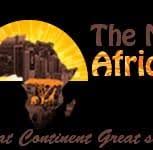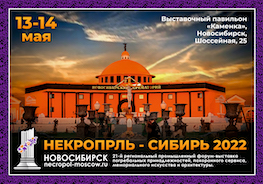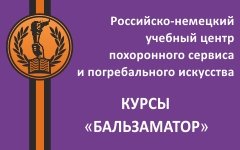Susan Mwenesi


Being the main showrunner after the loss of a family member is not an easy task as you have to balance between managing your grief and what seems like a million callers; sympathizers, distraught family members, comforting others like friends. I have been there and you have probably been there and we can attest to the fact that there are times we just wanted to be left and alone to grieve only that we had to suck it up and get a move on all through.
When The Neo African caught up with the grandson of an exiled politician, having the best practices of different worlds and techprenuership, Zolani Matebese, he told us that it doesn’t have to be this way…..
TNA:Tell us about yourself
I was born in Nigeria to a South African Exile family. My grandmother was very active in politics and even in exile; our house was a stopover for what seemed like everyone in the South African diaspora.

We were based in Lagos but travelled extensively and I spent my formative Childhood years between the UK where my Mother’s family was based and the US with my Father. Primary school was in Nigeria and I started high school there but switched to Zimbabwe in the first year.
Zolani :Tell us about your education and how it impacted on the person you are right now
I had a fairly typical schooling career other than the switch to Zimbabwe in the first year of high school although I was in a boarding school and I think that required me to be exceptionally independent and self sufficient. I was ok at sports and honestly couldn’t generate the interest to do more than be a solid B student academically
What did you want to be when growing up? Is it anywhere near what you are right now? If not why?
I wanted to be a pro motorbike racer, (can you believe we still don’t have one?) in Europe. This led to many perplexed looks and interesting conversations with South Africans when they’d ask what I wanted to be; a racist?? No, a pro racer.
Unfortunately the idea of the first son/grandson on motorbikes did not sit well with the matriarchs of the family. That dream was firmly squashed. Even today, my wife and daughters refuse to allow me on a motorbik
You have 26 years’ experience as an executive. Please tell us about this journey
I started work very young to contribute to the family. At 17 I had a day job and a weekend job. I skipped the traditional route of high school> university and went straight into the working world as soon as I could. I had always been impatient to have control of my own life and decisions and so the idea of more years “studying obsolete technology” was not appealing to me. That was probably a good thing as, being in and returning from exile, there wasn’t really a familial asset base that would have allowed us to afford university.
I started work as a systems administrator because of my affinity for computers and technology and bootstrapped myself to the highest levels of Microsoft and Cisco certification. My career has taken in great companies such as the JSE, Dimension Data, Harmony Gold, Rand Water and the City of Johannesburg and I’ve worked with people from “Pony guy” to ministers.
You mentioned offering ‘real-world leadership’ as one of the reasons you are highly sought after. Define that kind of leadership
I define “real world leadership” as the ability to translate the theory and ideals of leadership practice into action. Unfortunately, the world does not operate in either ideal scenarios or academia. Where the rubber hits the road, in Africa, one must be able to crystallise the thinking at the heart of leadership theory, operationalise it and make it relatable to the teams that one leads. I feel that is the best way to generate real followership and sustainable performance.
- Please tell us about Jedi, the innovation incubator (When it started, why you started it)
JEDI may not be the sexiest, most expensive, or shiniest thing I have ever achieved but it is what I am most proud of in my career. It started as a question: how do we solve youth unemployment in Johannesburg using technology and was distilled into a concrete programme of skills improvement, experiential learning, and economic inclusion.
At the end, we produced 500 graduate-level members of the workforce who would otherwise not have had the opportunity to be economically active. An example: one of our Jedi’s was a guy operating the pony ride at a nursery in the west rand (pony guy). Nothing but a basic high school diploma and no real prospects. He completed the JEDI programme, got a great job, and today, owns his own company.
- How many businesses does it have now and what are the future prospects?
The innovation incubator was the #HackJozi challenge fund. This was a combination incubator/boot camp for start-up entrepreneurs which aimed to foster skills, innovation, and entrepreneurship in the broad area of digital technology. The fund contributed R5M per year to the ecosystem with 2M being direct cash injections to the enterprises with the most promising start-ups. Over 200 businesses benefited from the initiative over the two years it was running.
Unfortunately, as with many innovative ideas in the political space, a new administration led to a closure of the programme
You have driven a USD$100M technology infrastructure project to successful heights. Tell us about that experience and with it some great achievements and challenges
I spent ten years of my life working on the Johannesburg Broadband Network Programme (JBNP) culminating in the creation of a metropolitan area fibre network and a state-owned network operator to run the business.
It was an amazing experience; I learned an incredible amount and got to be a part of something that left a real legacy for the City. When we started the project in 2008, it was impossible to use a smartphone or idevice in the poorer areas on the outskirts of Johannesburg (no fibre backbone to mobile base stations) and by the time we were done, fibre to the home was prominent, broadband penetration had increased dramatically and we had started to see the benefits of bridging the digital divide.
This did not come without challenges; building consensus, swings in public sentiment, regulatory and legal issues, organizational inertia and political agendas; all were significant and seemingly insurmountable obstacles at different times. Only organizational will and perseverance got our team through. One of the strangest memories from this experience was the final cheque issued to pay for the network. It was a cheque for R1.2 Billion and all the zeroes didn’t fit in the space given…..
- How did the idea to start send off come about?
Sendoff happened when I was helping out with a funeral. The whole process was just so traumatic, inefficient, opaque, and frustrating that I thought come on, there has to be a better way to do this. I didn’t immediately see there was a business there but the idea had infected me.
I couldn’t stop thinking about what if we could build an app like Uber for this? It took a while to do anything because the idea was just so off the wall. I was uncomfortable with it at first. It also had extra significance for me as I lost my mom quite early and that experience was so traumatic that it scarred me for life. Yet 20 years later there wasn’t a better way to deal with funerals and saying goodbye to a loved one.
That whole set of circumstances made it an incredibly compelling idea. What if I could make this process simpler, less traumatic, just…better? I did some research and the more I learned, the more appalled I became about just how bad the process could be. I was working with one of my ex JEDI’s at the time on another project and she had started off in the funeral industry so I asked for her thoughts..
Her thoughts were “what on earth are you waiting for? Let’s build this thing!”

Tell us about your co-founder
Thabi is one of the top JEDI’s from our programme, she also is an exceptionally dynamic go-getter. She started her own cosmetics business and is pursuing a law degree. She also has very different but complementary skills to me but we do share losing our mothers’ at a young age. She is very much a people’s person, creative but detail-focused and open-minded where I can be very much a big picture thinker, more a tech person than a people person, and a little dogmatic about how we achieve certain goals.
The app is said to be user-friendly, please let us know some of the features that make it user-friendly
We put the user first when designing this app. Everything was reviewed through the lens of making the process, interface and access simple. At every stage we asked the question; does this make it easier to use. From language to visual design, everything is made for ease of use and aesthetic appeal. We don’t even make people log in until purchase to make the experience as friction-free as possible.

- What are the benefits of using the app?
Arranging a funeral with sendoff is 10X easier than any other process that currently exists.
- It is easier; you can choose pre-built packages or make up your own visually
- It is better value; we have sourced the best value providers in the market to get the best prices and value for money
- It is faster; you could arrange an entire funeral in less than half an hr
- It is safer; You don’t need to visit multiple funeral homes
- Sendoff manages all tasks to ensure your satisfaction. No need to call to make sure that the hearse/cars/flowers/caterer is ready; we do all that.
We also have checklists so users know exactly what to do and what is involved with all the aspects of the funeral
Who is your target market?
Initially, we’re targeting 35-45-year-old professionals. As our population trends younger, these are people who are being thrust into the role of funeral arranger having never done it before. This is also a generation that is expecting a technology solution to any of life’s problems.
What has been the response in the market?
Fantastic so far. We have been getting an average of 10-15 new users per day. For a very specific app like Sendoff, this is excellent traction. We have also been approached by numerous financial services companies that want to use Sendoff for consumer education and platform access.
- Tell us about the first time you tried to sell the idea to the layman
I first told my wife about the idea before it was fully fleshed out. She laughed out loud. This is a very common response. The very idea is so unusual and so far from the traditional way of doing things that it provokes very strong reactions. Some people make the “Oprah meme face”: Whaat!?!
This is good for us though; people remember unusual things and so we immediately gain real estate in a potential user’s mind. Then, when the need occurs, the memory is jogged to look up Sendoff.
What are some of the values that will help you connect with your customers?
Both founders have been through tragic losses, losing our Mothers’ at a young age. This means we empathize with our users and have built sendoff with heart. Our primary values are empathy and “being human” in an industry that can view its customers as commodities.
b) What are some of the business values that will help propel the business to higher heights?
A laser focus on being the best way for anyone to “do” a funeral. We believe if we are 10X better, deliver better value for money, and more accessible we will be set for success.
- How much did it take to start the app?
Our investment has been completely bootstrapped and in direct costs we have spent just under US$50K
Where can one get the app and is it free to download?
Sendoff is available in all app stores and is completely free to download.
Please walk us through how a funeral send off through your app is executed from the first call or notification on the app to the time you are burying the dead

From the time a loved one passes on, a user can request a pickup of the deceased once they have been certified as having passed by a doctor. The user can then select a complete, pre-built funeral package or choose a casket, flowers, transportation options, cremation or interment, a church or hall, catering, tombstones, obituaries, everything needed.
- Please list some of the services such as flowers, casket
- Pickup of the DeceasedSendoff offers pickups of the body whether the deceased is in a hospital, at home or in a hospice.
- Coffin or Urn selectionSendoff offers users the ability to choose a Coffin or Urn for the deceased. A comprehensive range of Coffins, Caskets and Urns can be found in the app.
- Burial/CremationsThe actual burial, interment or cremation of the deceased at the cemetery or crematorium can be arranged within the app.
- Church/Hall BookingsA list of available Churches and Halls can be found in the app
- Transportation ServicesIn many cultures, it is customary to book transportation for relatives to attend the service and burial. Sendoff offers a list of transportation providers in the app.
- Flowers & Arrangements
- Users can decide on and book floral arrangements and any decorations for the coffin, gravesite and the venue of the service or reception. Sendoff offers a list of available florists in the app.
- CateringUsers can decide on and book catering arrangements for the reception. Sendoff offers a list of available caterers in the app.
- Photo/VideographyUsers may want to decide on and book a photographer or someone to film the proceedings. Videographers can also provide live streaming of the funeral. Sendoff offers a list of available photo/videographers in the app.
- ObituariesFor users that want to issue an obituary in the newspapers. Users can also arrange an obituary from the app.
- TombstonesIt is customary to order a head/tombstone after the decedent has been buried. Sendoff offers a list of tombstone providers in the app.
- Cleaning ServicesFor Users that want to have the decedent’s home or garden professionally cleaned as part of wrapping up their estate or when using the home for a reception, wake or after-tears. Sendoff offers a list of cleaning service providers in the app.
- Funeral Finance[Coming soon] Sendoff offers financial support from their finance partners within the app.
- ChecklistsMany people are overwhelmed and do not know what to do when someone dies. The sendoff App comes with checklists detailing all the steps needed to properly plan a funeral and links to Sendoff’s website with a wealth of data around how to do anything related to a funeral
- Who are some of the service providers you use?
We use best-of-breed, vetted service providers to ensure that users have the best experience possible. Our partners are also committed to delivering value for money and so the total expense is always manageable.
20. What are some of the challenges you have encountered so far?
a) With the app?
Even with our technology experience we chose to start building V2 of the app first and had to reprioritize to building an MVP and spending our resources on things other than technology features. Design, advertising, cloud platforms etc all have been required to get to an MVP.
We also had Covid related issues. Our remote team working on the database is in India and they went offline when the severity of the pandemic increased there in the week before launch. We had to burn some serious midnight oil to make the launch date.
b) With service providers
This is a massive disruption to the way things are done in a very traditional industry. We are asking the industry to cannibalize itself in a way and nobody likes change. Once the initial shock wears off however, we have seen a real willingness to engage and be involved. Our stringent vetting requirements do mean that we can’t work with everyone and that has caused some discomfort.
c) When trying to create awareness
Any app that requires a change in behaviour will face some scepticism. We have definitely seen that. As noted earlier, there have been very strong reactions ranging from outright hostility, to disbelief, to “oh man that is such a great idea”. Our mission at the moment is to create as much brand awareness as possible so that in the event a user has a need, they will think of using sendoff and then see how much better it is.
What are some of your achievements so far?
Approval by all the major app stores was very significant for us. Our focus on delivering a quality, efficient and well-coded app meant that app store approval went really quickly and well for us.
Approval by Stripe as a payment partner also was significant as it was a validation that our documentary and governance processes were in place.
Finally, getting our first hundred users in just under 2 weeks was a massive milestone. It gives us data and real use cases to validate our thinking and useful feedback on where to improve.
21. Where is your business based and will it expand to other countries?
We are based in RSA at the moment and will definitely expand. We have targeted international expansion into Africa and Europe in late 2022. We have a global expansion roadmap that is in place and just dependent on uptake and traction.
22. Please comment on the uptake of apps in Africa now that the continent is hot on the heels of Silicon Valley in churning out apps
Africa is the new frontier for app development and usage. We think that the combination of first world technology availability and developing market economics will see the rise of global players solving real problems at scale. A manifestation of technology doing good.
23. Please comment on the tech scene in Africa
Africa has birthed numerous geniuses who haven’t been recognized and given their proper due. The technology scene has been different in that the rise of technology coincided with the emancipation both politically and economically of Africa as a continent. We don’t need to go to the US or Europe to make a living and make a difference but we CAN use their technology to solve our own unique problems. This coupled with the unique “can do, will do” spirit of Africans makes the technology scene in Africa really exciting and definitely the place for investment in the next 10 years.
24. What is your message to the
a) African Man
The definition of what a Man is has changed in our lifetimes. The ideas that we were raised on and the fundamentals of being a strong man have dissolved, never to return. Most of these fundamentals have been identified as the basis for toxic masculinity.
So, we can refuse to recognize that the ground has changed and be washed away or we can grasp the chance to rewrite the rules for what being a Strong, African Man is. These new rules mean empathizing with the strata of our society that have been oppressed; females, the LGQTI+ community, the differently abled. The new rules mean extending a helping hand and rising together. And who better than us, for we know what it is to be oppressed.
b) African entrepreneur
Entrepreneur save yourself because nobody is coming to save you. No angel with wings of cash, no government cheque. Just the recognition of what needs to be solved, that grit to persevere, that determination to not quit. That is our superpower as Africans and it is a superpower; companies that make something valuable for a big customer base will be stronger coming from Africa because of our unique challenges, limited VC ecosystem and our ability to write our own destinies.












